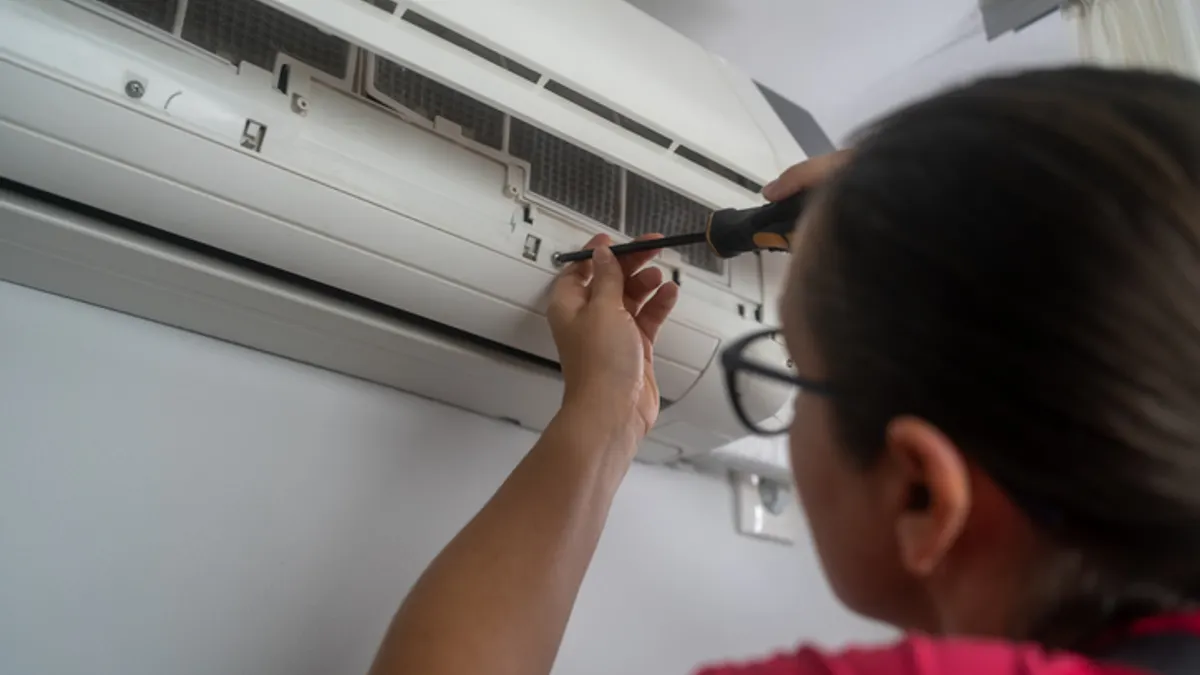Dive Brief:
- Demand for office space may finally be picking up, according to VTS’ office demand index, or VODI. This measure of U.S. demand for office space, which VTS produces quarterly, reached 55 in December for the sixth consecutive month of year-over-year growth.
- This index level, up 19.6% from the previous December, indicates that new demand for office space was coming in at 55% of its average pace in 2018 and 2019, the report says. Demand was down in the technology, advertising, media and information sector as well as the finance, insurance and real estate sector, VTS says. But offsetting that decrease was an increased demand from other sectors, including government and healthcare.
- “As more employees are returning to the office, and as demand for [the] office itself grows, so does the need to manage their on-site experience,” Max Saia, vice president of investor research at VTS, told Facilities Dive.
Dive Insight:
VTS calculates the VODI based on pre-pandemic demand levels, with the average level of new demand in 2018 and 2019 equal to 100. The VODI has been “largely stagnant” since October 2021, VTS said in the quarterly index report. Even though national demand is up, Saia noted that VTS is not ready to declare the tides are turning.
“It's too soon to call it a significant sea change, as there is still a ways to go to recoup lost demand, and we feel gains will be gradual, but consistent,” he said. But, he added, the increase in demand does imply leasing activity will increase over the next six to nine months.
Heading into this year, companies across North America said they plan to encourage employees to spend more time in the office. VTS says the return to office “appears to have reached at least a temporary conclusion.” The share of remote workdays across all industries in the 10 largest U.S. metropolitan regions reached a low of 32.7% in November 2022 and has since risen to 34.4% in December 2023, VTS notes, citing data from WFH Research
This trend, alongside a growing perception that a successful economic “soft landing” has been achieved, may be motivating employers to search for new office space, VTS says. And, as Saia put it, more demand for office space and an increase in employees returning to the office will give facilities managers more to manage.
“Knowing the customer and having a deeper understanding of their behavior within the asset through data leveraged from tenant experience technology is something that owners are doubling down on as they see an opportunity to uniquely cater the experience in the asset to drive tenant retention in what [has] been a protracted recovery,” Saia said.
Facilities managers have plenty of solutions to choose from when it comes to getting their hands around occupancy data that can inform space planning and operational efficiency improvement measures. Firms like Eptura and Envoy offer management platforms that combine workplace experience, preventive maintenance and visitor management tools. Robin launched a data tool for office utilization in commercial real estate. Large facilities management players are also rushing to meet these demands as evidenced by CBRE’s $100 million capital investment in VTS.











